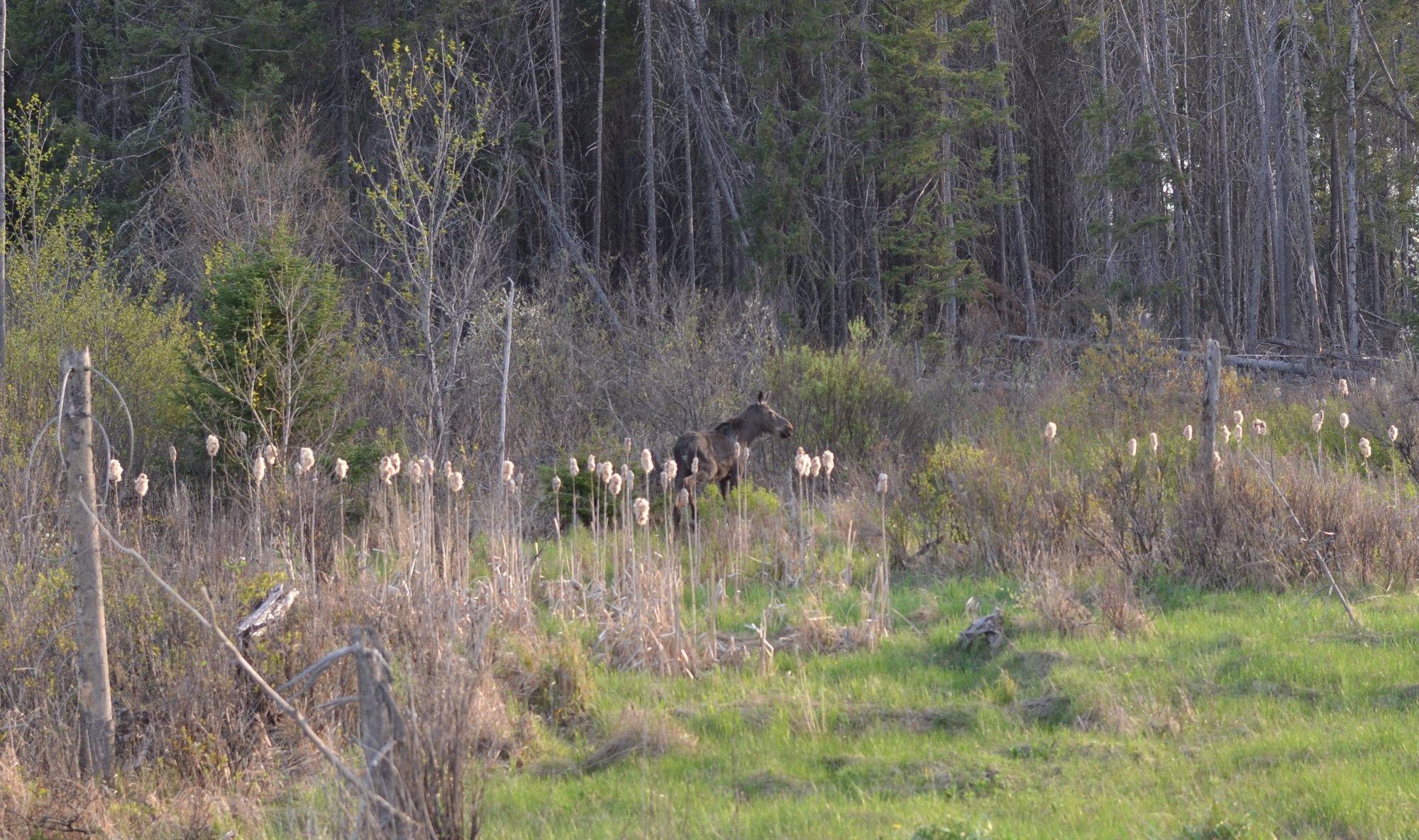Michigan Conservation Officers with the Department of Natural Resources are urging motorists to use caution and remember safety when stopping along Upper Peninsula roadways to view and photograph moose or other wildlife.
In recent weeks, for example, moose have been seen with regularity along a section of U.S. 41 west between Ishpeming and Humboldt in western Marquette County.
“In many cases, motorists stopping along the highway to take pictures of these moose have created traffic hazards and unsafe conditions for pedestrians,” said DNR conservation officer Mark Leadman. “These dangerous actions could cause serious injuries or fatalities.”
Conservation officers and police have observed motorists opening doors into traffic, stopping in traffic lanes, making illegal U-turns, not slowing down in areas congested with parked vehicles and pedestrians.
Pedestrians have also walked or run across traffic lanes with vehicles present or stood focused on moose, not paying attention to passing traffic close behind them.
“Those stopping to look at or take pictures of moose need to be mindful of their surroundings and think defensively while they are in and out of their vehicles,” said Lt. Pete Wright, a DNR district law supervisor.
Moose have been seen along several highways in the U.P. including M-95 and M-28.
The DNR Law Enforcement Division has offered some safety tips:
- When you notice vehicles stopped to view wildlife, slow down when passing through the area.
- Do not stop in the traffic lanes to take pictures or watch moose.
- When pulling over to view or photograph a moose, pull all the way off the roadway onto the shoulder of the road, to the right of the fog strip.
- Do not open car doors without looking for traffic.
- Do not walk or run out into traffic.
- Do not make U-turns or other illegal traffic maneuvers.
- Be aware of moving traffic and other pedestrians.
- Do not approach moose, view or photograph from a distance.
- When pulling back into traffic, watch for vehicles and pedestrians.
- Drive slowly away from the area when leaving.
“Seeing a moose can be a very exciting Upper Peninsula experience, especially if it’s the first time,” said DNR deputy public information office John Pepin. “Many people want to capture those moments with a photo or video, but in doing so wildlife watchers need to remain safety conscious.”
Moose are a native species to Michigan, but their numbers declined substantially during European settlement. By the late 1800s, moose had disappeared from the Lower Peninsula and only a handful remained in the Upper Peninsula.
In the mid-1980s, the DNR translocated 59 moose from Algonquin Provincial Park in Ontario, Canada and released them in western Marquette County. The goal of the moose reintroduction was to produce a self-sustaining population of free-ranging moose in the Upper Peninsula.
Moose are currently found in two areas of the Upper Peninsula: the reintroduced population in Marquette, Baraga and Iron counties, and a smaller remnant population in the eastern U.P. found primarily in Alger, Schoolcraft, Luce and Chippewa counties.
During the most recent moose population survey in January 2011, DNR wildlife biologists estimated 433 animals in the western Upper Peninsula, up slightly from 420 animals in 2009. No formal survey of the eastern U.P. moose population is conducted, but local biologists estimate there are fewer than 100 animals, based on field observations and reports from the general public.
Moose are a game species in Michigan though no hunts have been authorized in recent decades.
Find out more information about moose in Michigan.
Michigan conservation officers are fully commissioned state peace officers who provide natural resources protection, ensure recreational safety and protect citizens by providing general law enforcement duties and lifesaving operations in the communities they serve.
 Keweenaw Report Your Source for Local News and Sports
Keweenaw Report Your Source for Local News and Sports





